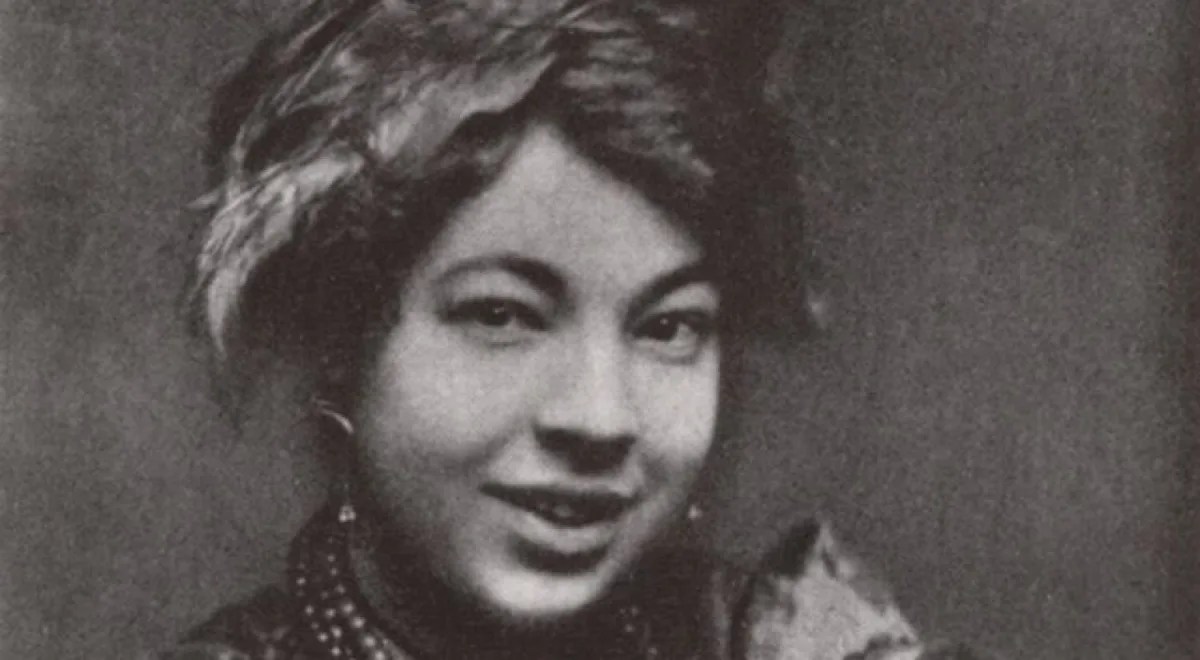10 Witches, Priestesses, and Wise Women in History You May Not Know About

Happy Women’s History Month! We all know about fictional witches like Circe, Nancy Downs, and the Sanderson Sisters. But what about the real folk healers, midwives, priestesses, and wise women of history? Here are ten women whom every contemporary witch should know about.
One quick note on terminology. Although you may have found this article by googling the word “witch,” not every woman on this list identified as a witch. In fact, many of them would have found the word offensive or even frightening. The history of women and magic is complicated and messy, filled with equal parts beauty, power, and pain. Some of these women enjoyed fulfillment and high status thanks to their spiritual work, while others suffered unimaginable torture and ostracism. All of them are part of our history.
Cameron (1922-1995)
Marjorie Cameron, who worked as an artist under the name “Cameron,” moved to Pasadena, California when her father got a job at NASA’s Jet Propulsion Laboratory. It was there that she met occultist Jack Parsons, and became involved in the mystical scene in Los Angeles. Cameron created occult-themed paintings and performance pieces, incorporating elements of the religion Thelema, which she, Parsons, and others in their circle practiced.
Enheduanna (23rd Century BCE)
Enheduanna, a Mesopotamian priestess in the 23rd century BCE, is widely regarded as the world’s first recorded author. Enheduanna wrote hymns and prayers to the Sumerian priestess Inanna, including her explosive “Exaltation of Inanna,” which beseeched the goddess to reinstall her as temple priestess after her exile. Complicating Enheduanna’s legacy, though, is the fact that her exile may have been justified—after all, she rose to prominence after her father conquered the Sumerian city-states.
Clarissa Pinkola Estés (1945-)
Jungian psychologist Clarissa Pinkola Estés became a legend among feminists and witches in 1989, when she published her seminal work on women’s spirituality, Women Who Run With the Wolves. In this book, Estés uses myths, folktales, and fairytales to explore archetypes of the “wild woman,” showing women how to integrate that archetype into their own spiritual work.
Dion Fortune (1890-1946)
Dion Fortune, author of The Sea Priestess, Moon Magic, Psychic Self Defense, and other books, was a founding member of England’s Fraternity of the Inner Light. Fortune devoted her life to the study of magic and occultism, and her writings form the basis of much of modern witchcraft.
Isobel Gowdie (1600s)
Not much is known about Isobel Gowdie, who lived in Scotland in the 1600s. However, she rose to notoriety when she was interrogated during one of Scotland’s witch hunts. Although her confessions of witchcraft were made under torture, making it hard to separate fact from fiction, scholar Emma Wilby argues in her book The Visions of Isobel Gowdie that Gowdie practiced a fusion of Christianity and Britain’s pre-Christian Fairy Faith.
Hilma af Klint (1862-1944)
Hilma af Klint was a Swedish artist in the 1800s who was interested in Theosophical teachings. Af Klint incorporated her spiritual explorations into her paintings, which consisted of many automatic drawings and channeled images. Some of her most famous paintings include a series called “The Ten Largest,” consisting of breathtaking compilations of abstract shapes, colors, and semi-decipherable words.
Marie Laveau (1801-1881)
Marie Laveau, known as the “Voodoo Queen of New Orleans,” worked as an herbalist and midwife in the 1800s. As a practitioner of the African Diasporic religion Voodoo, she was also a leader in the community, guiding other practitioners and helping people with financial troubles and other issues.
Catherine Mavoisin, a.k.a. “La Voisin” (1640-1680)
Catherine Mavoisin was a fortune teller and magician in the 17th century, selling magical objects to aristocratic clients and telling their futures. However, “La Voisin” had a dark side to her: along with amulets and fortunes, she also purportedly arranged for black masses among her clients, and worked as a commissioned poisoner. By some estimates, Mavoisin poisoned up to 2,500 people.
Pamela Colman Smith (1878-1951)
Illustrator, artist, and playwright Pamela Colman Smith first made a name for herself in Kingston, Jamaica, where she staged plays and puppet shows. Smith was also involved in the Order of the Golden Dawn, an occult society in which she met W.B. Yeats and Arthur Waite. Waite approached her about illustrating a new version of the tarot, which is how the Rider-Waite—now commonly called the Smith-Waite—Tarot was born. The Smith-Waite tarot is easily the most famous tarot deck of all time, thanks to Colman’s illustrations.
Rachel True (1966-)
Rachel True became famous in the 1990s, when she portrayed Rochelle in the teen witch movie The Craft. Little did her fans know, though, that True was—and still is!—a witch in real life, reading tarot cards professionally. True’s most recent creative endeavor is her own tarot deck, the True Heart Tarot.
Doreen Valiente (1922-1999)
Gerald Gardner is generally credited as the father of modern witchcraft, having come up with many of the tenets of Wicca. However, it was actually his friend and co-practitioner Doreen Valiente who fleshed out much of the new religion, writing liturgies, poetry, and books detailing Wiccan rituals and ideas. Many of her books, like Witchcraft for Tomorrow, are still considered essential reading for new witches, Wiccan and non-Wiccan alike, and the beauty and lyricism of her poetry is unsurpassed.
(featured image: The Craftsman Magazine)
Have a tip we should know? tips@themarysue.com